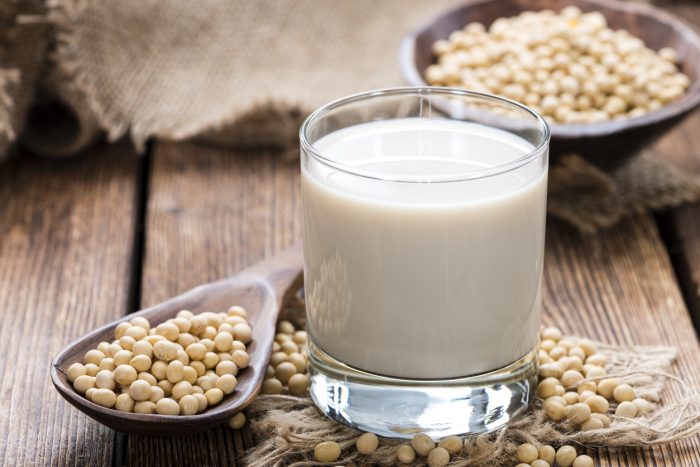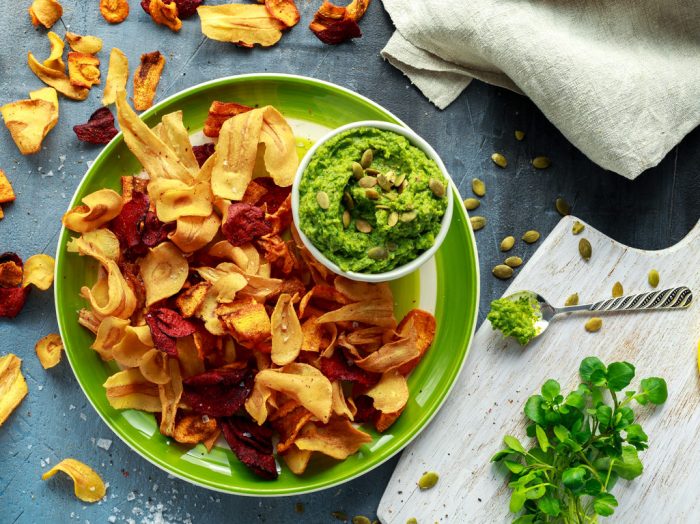If you’ve decided to give up on cow’s milk for various reasons, find out what your dairy-free milk alternatives are! You can experiment with all of them, but choose one that fits your needs.
I don’t know about you, but I have a history of cow’s milk. An emotional relationship that started in my early childhood. My grandparents had a small farm and I used to drink milk almost every evening. But not anyhow! My grandmother milked the cow straight into my cup. Then, she called me from the playground. It didn’t matter how many children I was with, I ran towards her to sip that white, fresh and raw drink that had some light foam on top. I used to love cow’s milk! But back then it didn’t matter if the milk was raw or pasteurized.
But then I grew up. The farm disappeared. I found cow’s milk only on the market, and it didn’t have the same taste. Besides, a few years ago I gave birth to a little girl who had cow’s milk protein intolerance – an abnormal reaction of the body’s immune system to the protein found in cow’s milk. That was the moment I started to look for alternatives to dairy milk.
You can have different reasons to choose dairy-free milk. Maybe you have a milk allergy, maybe you’re a vegan, or you simply want a low-fat option to cow’s milk.

5 Dairy-Free Milk You Can Choose Instead of Cow’s Milk
1. Soy Milk
Soy milk has, more or less, the same taste of regular milk and it’s a nutritious alternative to cow’s milk. It’s low in fat (100 to 130 calories per cup, depending on brand), cholesterol-free and higher in protein than other types of plant-derived milk. Soy milk is a great source of nutrients: calcium, manganese, magnesium, choline, folate, thiamin, riboflavin, phosphorus, selenium, and potassium.
Be careful to choose unsweetened soy milk to limit your added sugar intake. If it’s possible, you should also buy organic varieties of dairy-free milk. Choose milk made from organic soybeans so that you can be sure they’ve been grown without pesticides and haven’t been genetically modified.
Soy milk works well in baking, so you can use it to make desserts. Be careful though, if you choose to avoid cow’s milk because of an allergy, you must know that soy is also a food allergen! Drink a small amount to see how your body reacts!
Soy milk is the most widely used dairy alternative, followed by other types of dairy alternatives such as almond milk and rice milk, according to a recent report made by MarketsandMarkets.

2. Almond Milk
Almond milk is a creamy, sweet, nutty, healthy, and nutritional dairy-free milk. It contains healthy omega-6 fats, and it’s rich in antioxidants including vitamin E, which is holding up aging caused by free radicals. It also has more calcium than cow’s milk. But is not the best choice for increasing your protein intake because one cup of almond milk contains only one gram of protein.
Unlike soy milk, almond milk is easy to make at home. Blend one part soaked raw almonds into three parts water. Start the blender on low and slowly move up to the highest speed until you reach the desired consistency. Filter the remaining almond bits, pour the dairy-free milk into a glass jar and keep it in the fridge.
One cup (240 ml) of unsweetened almond milk has only 30 calories. That’s why it’s perfect for smoothies or milkshakes if you want to lose weight! You can also drink it for breakfast, with toast, scrambled eggs or whatever you want.
3. Coconut Milk
Coconut milk is made from coconut meat and water. The texture of most canned coconut milk is more suitable for cooking because it’s thicker than the regular one. But if you only want to enjoy your morning cereals with coconut milk, choose a more diluted one, which comes in a carton.
You can also make coconut milk at home. All you have to do is to blend unsweetened shredded coconut or small pieces of fresh coconut meat with hot water. Blend until the coconut is smooth and looks milky. Strain the coconut flakes and squeeze out all the milk. Store it in the fridge. Your coconut milk will separate after being refrigerated. In the upper part of the container, you’ll have the solid part, looking like coconut butter. The diluted milk will remain on the bottom. When you want to use it, just give it a good shake, and it should be ready. If not, you should warm it up a little!
Coconut milk is rich in essential minerals, including manganese, selenium, copper, even zinc, and iron. It has less protein and calcium compared to cow’s milk. Diluted store-bought coconut milk drinks contain 45-75 calories and about 4.5 grams of fat per cup. Undiluted coconut milk contains 445 calories per cup and 48 grams of fat.
Coconut milk is great for making curry – it’s commonly used in Asian cuisine – and for adding flavor to your cream soups. You can also use it to replace cow’s milk when you bake desserts or in smoothies.

4. Rice Milk
Rice milk is a very popular, healthy, and nutritionally wise option for you if you’re seeking an alternative to conventional dairy and milk products especially if you have milk allergies or gluten intolerance How come? Because rice is gluten-free.
It’s the lightest and most digestible kind of plant-based milk, but it has no proteins.
Rice milk is not as expensive as almond or coconut milk. Its taste is sweet but neutral, it’s low in fat but high in carbs. Usually, unsweetened rice milk has from 50 to 120 calories per cup, depending on variety, and about 2 grams of fats.
You can have it in the morning, with cereals and fruit.
5. Hemp Milk
Hemp seeds are a healthy choice and a good source of omega-3 fatty acids which promote a healthy heart and normal brain function. You can eat hulled hemp seeds or just try hemp milk. Omega-3s are particularly important if you’re vegan or vegetarian because fish is one of the leading sources of these fats. While it’s lower in protein compared to soy or cow’s milk, hemp milk provides more iron.
This type of dairy-free milk is more expensive than most plant-based alternatives. Hemp milk is nutty, rich and creamy. Like rice milk, it’s free of common allergens so you can enjoy it safely.
One cup of unsweetened hemp milk has about 70-80 calories. You can easily use it in sauces, smoothies or for homemade ice cream!






